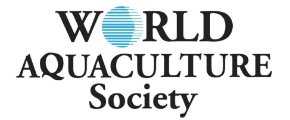EVALUATION OF CULTURE TECHNIQUES FOR TWO Halichoeres WRASSES H. melanurus AND H. chrysus
To date, only five ornamental wrasse species have been successfully cultured and no commercial production exists. The melanurus and yellow wrasses (Halichoeres melanurus and H. chrysus, respectively) were chosen as candidates for development of culture methodologies due to their popularity in the aquarium trade and short larval duration. The objective of this investigation was to elucidate crucial elements of broodstock management and larviculture methodologies that would contribute to the development of empirically based culture protocols and ultimate commercial production of these valuable marine ornamental species.
Results from initial larviculture trials indicated that melanurus wrasse larvae initiated feeding, swimbladder inflation, flexion, and metamorphosis at 3, 10, 15, and 37 days post hatch (DPH), respectively, with 0.5% survival through metamorphosis. First generation wrasses began spawning at ~8 months of age, signifying closure of the life cycle. For both wrasse species, an inverse relationship was found between water temperature and embryo incubation period with incubation temperatures of 25 and 28 °C yielding higher survival and smaller larvae at hatch. Assessments of melanurus and yellow wrasse larvae prior to first feeding established that algal densities greater than or equal to 50,000 cells mL-1 or artificial shading resulting in ~300 lux, enhanced growth and survival. Melanurus wrasse first feeding trials revealed that algal densities of 300,000 and 500,000 cells mL-1, provision of Parvocalanus crassirostris nauplii (< 75 µm), and prey densities greater than or equal to 5.0 items mL-1 resulted in elevated larval feeding success. Yellow wrasse first feeding culture trials examining similar parameters did not elucidate any advantageous culture protocols, indicating the necessity for further exploration of these parameters and others affecting larval first feeding success. Continued investigation into larviculture techniques influencing growth, survival, and feeding success should establish methodologies leading to commercial production protocols for these and other marine ornamental species.













